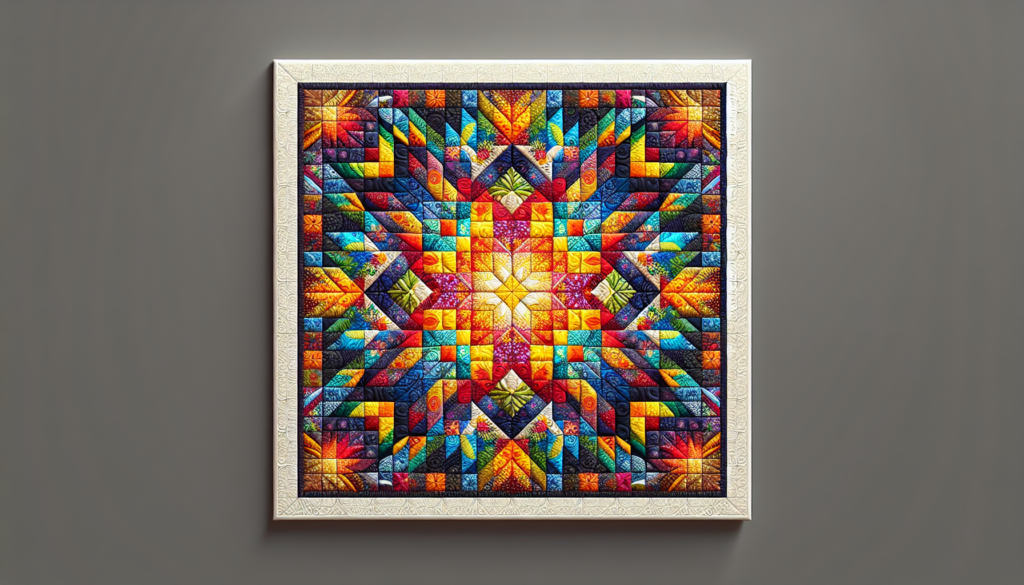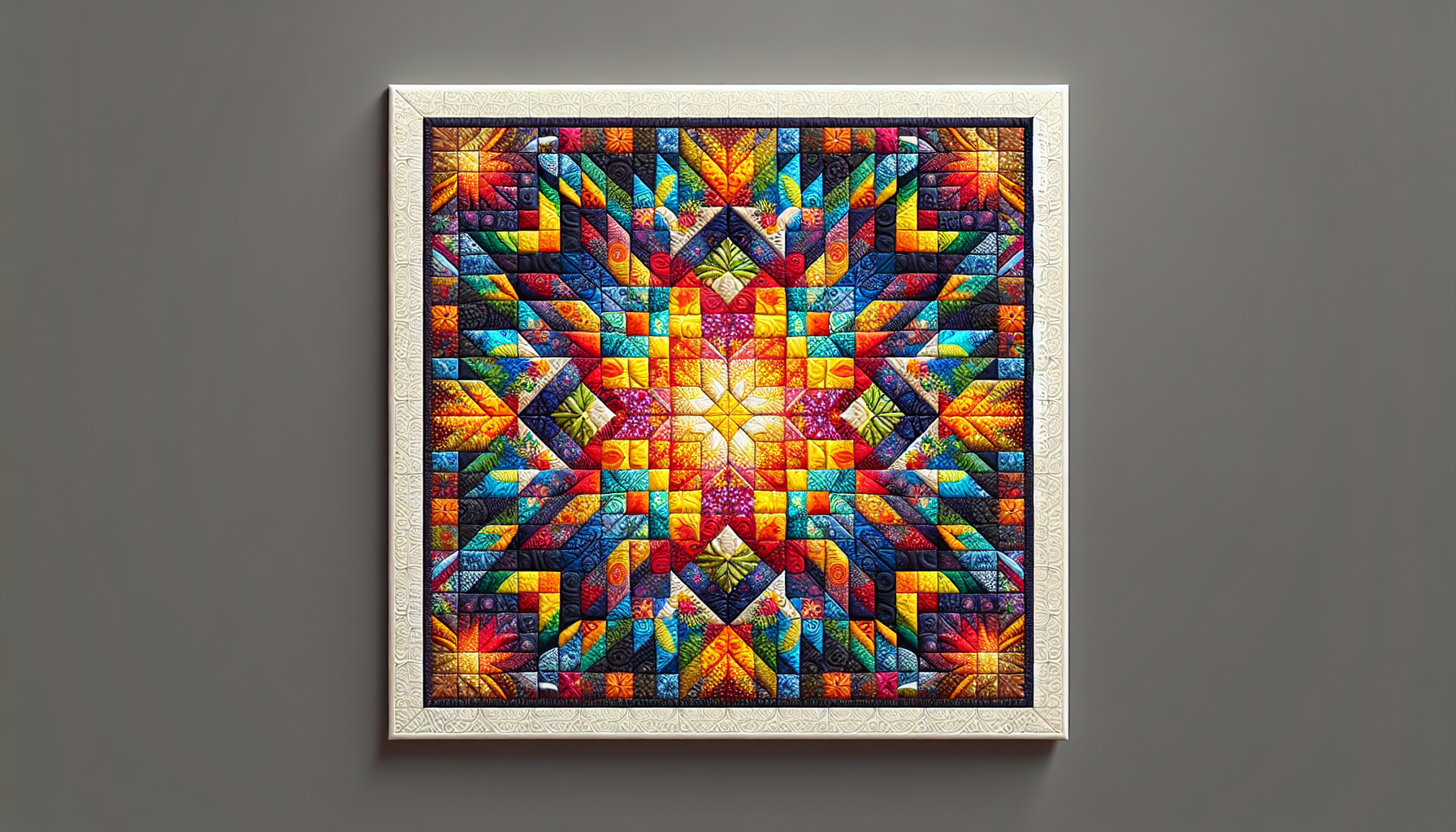Have you ever wondered what truly defines a quilt? Is it the materials used, the stitching techniques, or perhaps something more intangible? In this article, we will explore the essence of quilting and unravel the essence of what makes something a quilt. From traditional patchwork patterns to modern interpretations, we’ll dive into this timeless craft and discover the unique qualities that capture the essence of a quilt. So, get ready to explore the world of quilting and unravel the secrets behind what makes something a quilt.
Materials Used
Quilts are typically made using three main materials: fabric, batting, and backing.
- Fabric: This is the colorful material used to create the patchwork design of the quilt. It can be made from various types of cotton, silk, or even synthetic fibers. The choice of fabric greatly impacts the overall look and feel of the quilt.
- Batting: Also known as wadding, batting is the layer of insulation that gives the quilt its thickness and warmth. It is usually made from polyester, cotton, or a blend of both. The thickness and quality of the batting can vary depending on the desired level of insulation.
- Backing: The backing fabric is the material that covers the back of the quilt and holds it all together. It is often a single large piece of fabric that complements or contrasts with the front design. The backing can be made from the same fabric as the front or a different material altogether.
Construction Techniques
Quilts are constructed using various techniques that involve the assembly and joining of fabric pieces. These techniques include piecing, appliqué, and quilting.
- Piecing: Piecing is the process of sewing together fabric pieces to create the patchwork design of the quilt. It involves cutting fabric into specific shapes, such as squares or triangles, and then sewing them together in a specific pattern.
- Appliqué: Appliqué is the technique of attaching fabric shapes or designs onto a larger background fabric. This can be done by hand or using a sewing machine. Appliqué adds dimension and visual interest to the quilt.
- Quilting: Quilting refers to stitching through all layers of the quilt to secure the batting and backing to the quilt top. It is often done in decorative patterns and adds texture to the quilt. Quilting can be done by hand or using a sewing machine.
Design
The design of a quilt encompasses the pattern and layout chosen for the quilt.
- Pattern: The pattern of a quilt refers to the specific arrangement of fabric pieces or blocks that make up the quilt’s design. There are countless patterns to choose from, ranging from simple geometric designs to intricate floral motifs. The pattern sets the overall aesthetic and style of the quilt.
- Layout: The layout of a quilt refers to how the individual fabric pieces or blocks are arranged within the pattern. This includes considerations such as color placement, symmetry, and balance. The layout plays a crucial role in determining the visual impact and cohesiveness of the quilt’s design.

Size
Quilts come in various sizes to suit different needs and preferences. Understanding the different sizes can help you choose the right quilt for your specific purpose.
- Standard Quilt Sizes: Standard quilt sizes refer to the traditional sizes commonly used for bedding. These include sizes such as twin, full, queen, and king. Standard sizes ensure that the quilt fits neatly on the bed and provides adequate coverage.
- Miniature Quilts: Miniature quilts are much smaller in size compared to standard quilts. They are often created as decorative pieces or for display rather than for practical use. Miniature quilting allows for intricate designs on a smaller scale and can be a fun challenge for quilters.
Function
Quilts serve different functions depending on their purpose and design.
- Bed Quilts: Bed quilts are designed to provide warmth and comfort while sleeping. They are typically larger in size and made to fit specific mattress dimensions. Bed quilts can be made from warm, insulating materials and are often designed to complement the bedroom decor.
- Wall Hangings: Quilts can also be used as wall hangings to add color and visual interest to a room. Wall hangings are usually smaller in size and can be created as standalone art pieces or as part of a coordinated set.
- Functional Quilts: Some quilts are specifically made for functional purposes, such as picnic blankets, baby quilts, or pet mats. These quilts are designed to be durable, easy to clean, and suitable for their intended use.
History
Quilting has a rich history that dates back hundreds of years. Understanding the origins and evolution of quilt making provides insight into the cultural and artistic significance of this craft.
- Origins of Quilting: The exact origins of quilting are unclear, but it is believed to have been practiced by ancient civilizations such as the Egyptians and the Chinese. Quilting was initially used as a practical way to create warm, durable bedding.
- Evolution of Quilt Making: Quilting evolved over time from a purely functional craft to an art form. In colonial America, quilting became a popular pastime for women, and the quilts created during this period were highly valued for their intricate designs. Quilting techniques and styles have continued to develop and adapt to changing trends and cultural influences.
Quilting Traditions
Quilting has given rise to various traditions and styles that reflect different artistic approaches and cultural influences.
- Traditional Quilting: Traditional quilting refers to the use of classic quilting patterns and techniques that have been passed down through generations. These quilts often showcase precise piecing and intricate quilting designs. Traditional quilts commonly feature floral or geometric motifs.
- Art Quilts: Art quilts go beyond the traditional boundaries of quilting and embrace a more experimental and expressive approach. Art quilters often incorporate unconventional materials, explore abstract designs, and convey personal stories or emotions through their quilts.
- Modern Quilts: Modern quilting is a contemporary movement that embraces clean lines, bold colors, and minimalist aesthetics. Modern quilts often feature asymmetrical designs, negative space, and unconventional quilting patterns. They reflect a more modern and contemporary sensibility.
Community
The quilting community plays a significant role in fostering creativity, sharing knowledge, and building connections among quilters.
- Quilting Groups: Quilting groups are informal gatherings of quilters who come together to share their work, exchange ideas, and provide support and encouragement. These groups often meet regularly and may organize quilting bees, workshops, or charity quilting projects.
- Quilt Guilds: Quilt guilds are formal associations of quilters that offer a range of benefits to members. Guilds often organize educational programs, host quilting exhibitions, and provide networking opportunities. Joining a quilt guild can be a great way to expand one’s quilting skills and connect with other quilters.
- Quilt Shows: Quilt shows are events that showcase a wide range of quilts, from traditional to contemporary. These shows provide an opportunity for quilters to display their work, gain recognition for their skills, and interact with fellow quilters. Quilt shows often feature competitions, workshops, and vendor booths selling quilting supplies.
Quilting Tools
Quilting requires specific tools to ensure accurate and efficient construction of the quilt.
- Sewing Machine: A sewing machine is an essential tool for most quilters. It allows for faster piecing and quilting, especially for large quilts. Quilters often prefer machines with specialized quilting features, such as a wider throat space and adjustable stitch lengths.
- Rotary Cutter: A rotary cutter is a cutting tool that allows for precise and smooth cuts through multiple layers of fabric. It is commonly used for cutting fabric pieces and strips, as well as trimming quilt blocks. Rotary cutters come in various sizes and can be paired with a cutting mat and ruler for accurate cutting.
- Rulers: Quilting rulers are clear plastic rulers with markings that aid in measuring and cutting fabric accurately. Quilters use rulers to ensure consistent sizes for their fabric pieces and to create straight lines and angles.
Quilting Terminology
Understanding common quilting terminology can help demystify the language of quilting and make it easier to follow patterns and instructions.
- Block: A block refers to a single unit or section of the quilt that is pieced together with other blocks to create the overall design. Blocks can vary in size, shape, and complexity, and they are often repeated throughout the quilt.
- Sashing: Sashing is the narrow strips of fabric that separate and frame individual blocks within a quilt. It adds a visual break between blocks and helps define the overall design. Sashing can be a solid color or a contrasting fabric.
- Binding: Binding is the final fabric strip used to encase and finish the edges of a quilt. It provides a neat and durable finish and helps hold the quilt layers together. Binding can be made from a matching or contrasting fabric and is often sewn by hand.
In conclusion, quilting is a versatile and creative craft that encompasses a wide range of materials, techniques, designs, sizes, and functions. From traditional quilting to modern and art quilts, the world of quilting offers endless possibilities for expression and creativity. The quilting community provides a supportive and vibrant environment for quilters to learn from one another, showcase their work, and connect with fellow enthusiasts. With the right tools, materials, and knowledge of quilting terminology, anyone can embark on a quilting journey and create beautiful and meaningful quilts.


